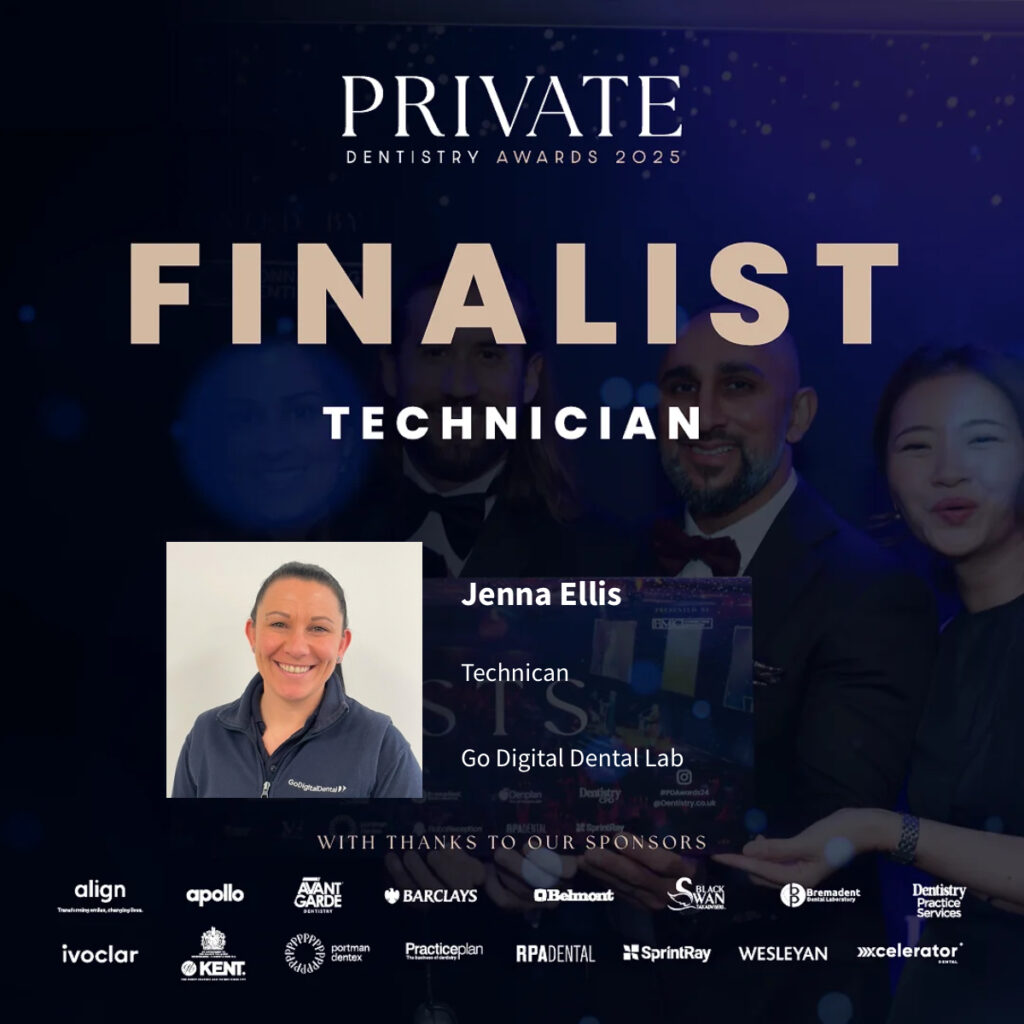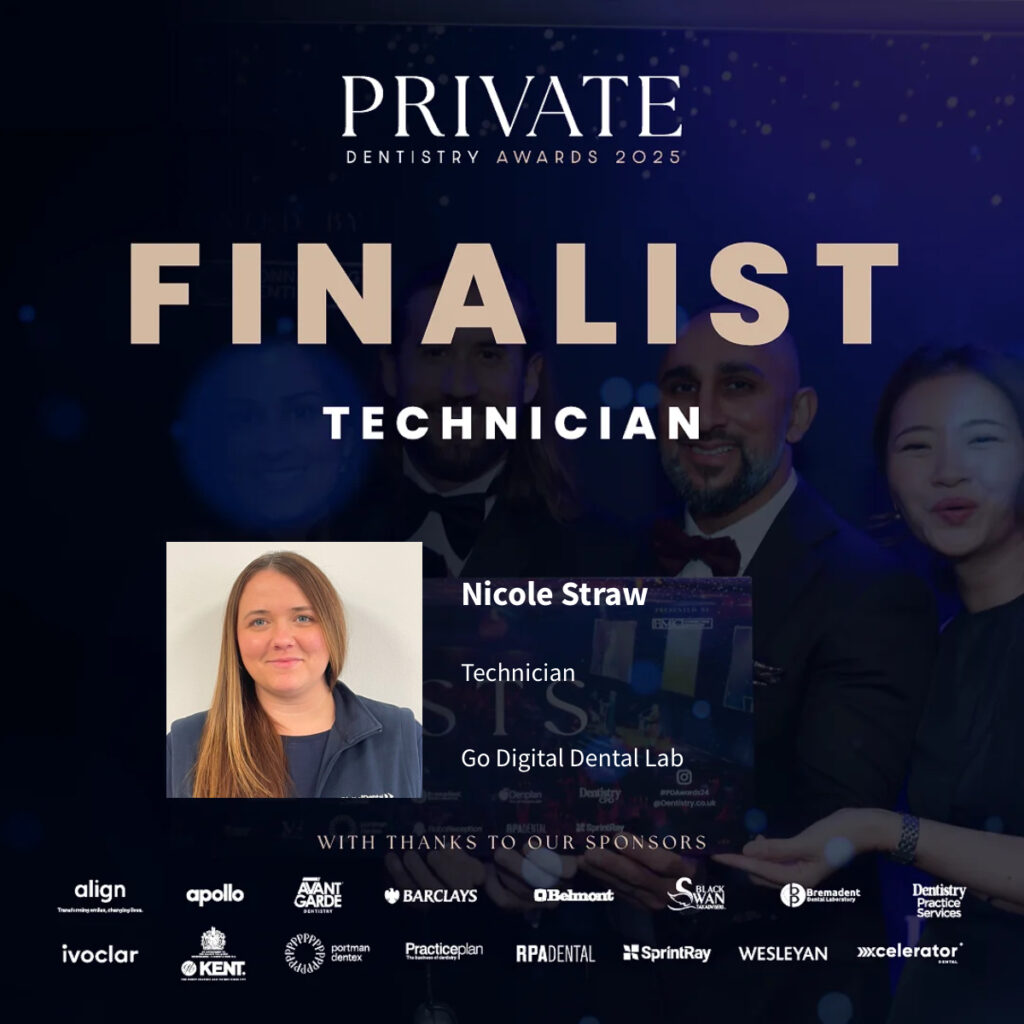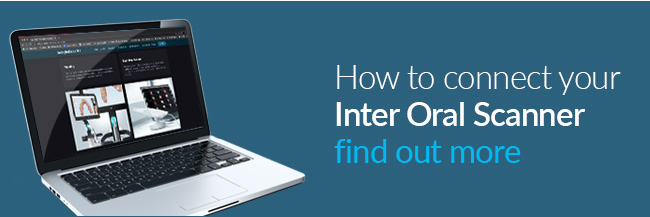Helping your practice go digital
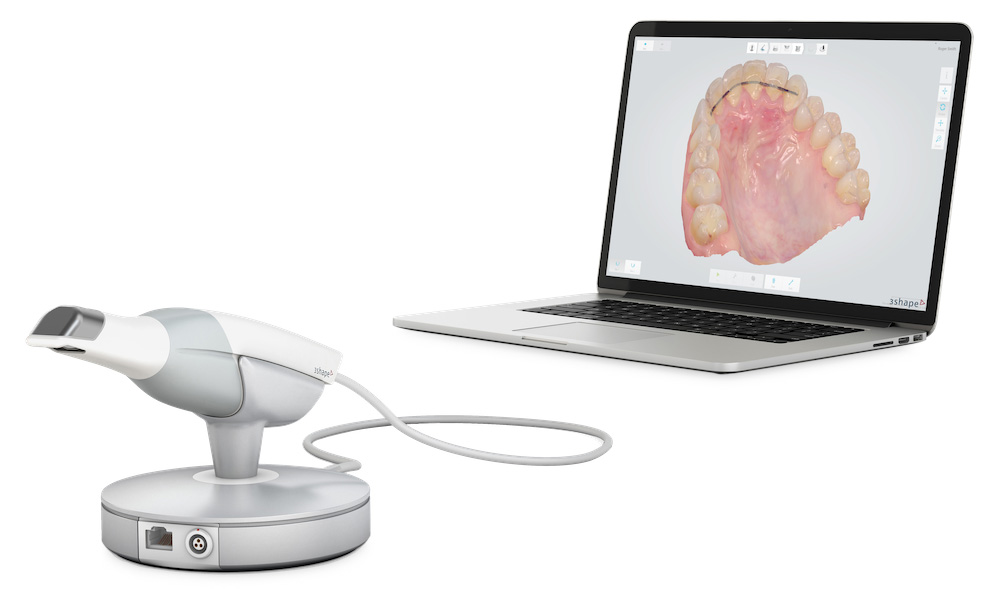
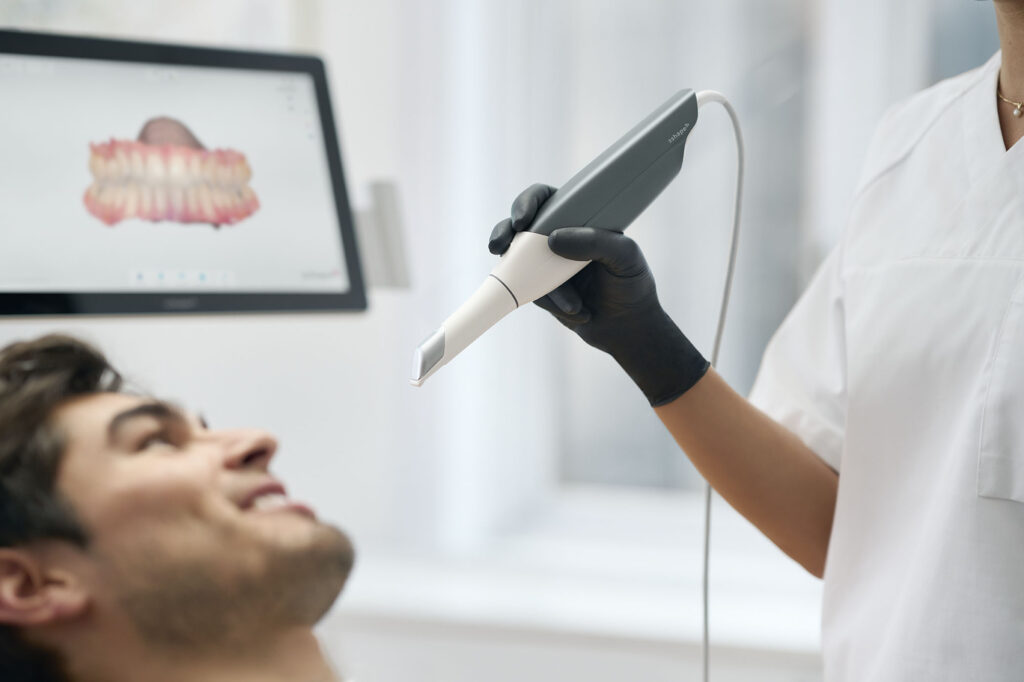
Like so much of the world, the future of dentistry is digital. At Go Digital Dental Lab, we’re committed to helping dental practices make a smooth transition into the digital era and keep up with the times.
Digital dentistry delivers:
- Greater accuracy: Digital impressions and scans reduce human error, ensuring precise restorations.
- More efficient turnarounds: Digital workflows streamline the process, allowing for swift production and delivery of restorations.
- Less time in chair: With digital tools, dental procedures become quicker, reducing the amount of time patients spend in the chair.
- Better patient experience: The use of digital technology makes treatments more comfortable and efficient, improving overall satisfaction.
Whether you’re experienced with digital workflows or are just getting started, our dedicated support team is here to assist. From training and case planning to troubleshooting and guidance, we’ll give you everything you need to know to ensure you get the most out of your scanner while you have it. In addition, our experts are available for hands-on support and consultation, helping you build confidence and grow your knowledge in digital restorations and scanning techniques.
Flexible solutions for every Smile
GoDigital Dental Lab Scanner Partnership Program
Making the move towards digital dentistry can seem daunting, often involving new, unfamiliar equipment that comes with a hefty price tag. Through our exclusive scanner partnership program, we can offer your practice a 3Shape TRIOS scanner when you partner with us for your lab work. This is designed to help make your move to digital dentistry easier and more cost-effective than you could have ever imagined.
Support
Training involves both online and in person guidance to dentists and nurses to enable the practice to get the necessary skills to fully utilise the benefits of an intraoral scanner.
Real time review
All scans that come through are checked by our specialist CAD CAM team. Live chat through our app-based chat can be organised to ensure feedback is given before the patient leaves the chair.
3Shape TRIOS scanner
The scanner is provided on a monthly minimum spend agreement, with no hidden fees or upfront costs. With the device in your practice, you’ll gain access to cutting-edge scanning technology while streamlining your workflow. Patients will also see the benefit of the scanner, as it eliminates the need for traditional moulds, which, as we all know, are not ideal for everyone. Even better, we’re happy for the scanner to be used for Invisalign cases, giving you the chance to see what this piece of technology can do across a range of treatments.
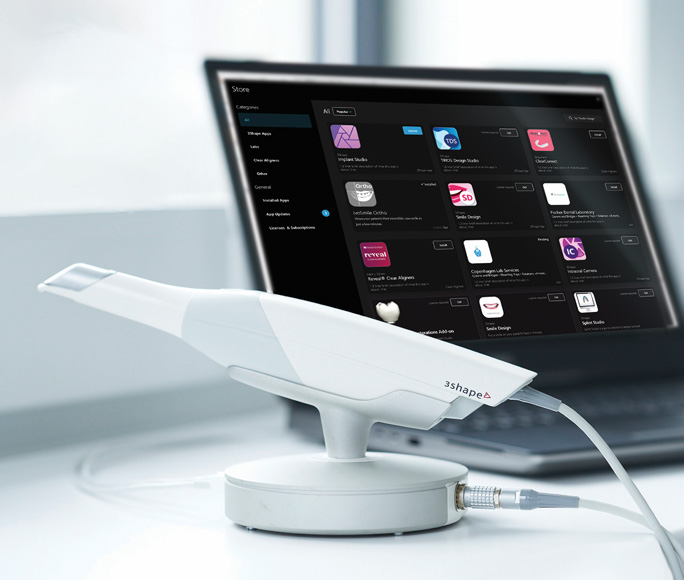
Request Our Dental Laboratory Price List Find out how our pricing can support your cases
Complete our simple request form to receive pricing tailored to your requirements. Our simple approach ensures you have all the information you need to plan cases efficiently, while partnering with a reliable dental laboratory you can trust.
Awards Finalists in the Private Dentistry Awards 2025
We are proud to share that two of our talented dental technicians at GoDigital Dental have been shortlisted as finalists in the Technician Team Member category at the Private Dentistry Awards 2025. This achievement recognises their outstanding skill, dedication, and commitment to excellence in digital dentistry.
Customer Reviews
Digital Scanner Partnership FAQs
How can digital scanning improve efficiency for dentists?
Digital scanning helps to create efficient dental workflows by providing a faster, more accurate way to capture dental impressions. Traditional moulds are not always the best option. They can be uncomfortable for patients and time-consuming for dentists. Digital scans eliminate these issues, capturing precise 3D images of the teeth in mere seconds. This offers a far more pleasant and comfortable experience for the patient than taking traditional moulds does.
The captured scans are instantly available for review, meaning that the dentist can quickly assess the data and make necessary adjustments, speeding up diagnosis and treatment planning. The digital files can be easily stored and accessed, simplifying record-keeping. Additionally, digital scans can be shared instantly with a dental laboratory like us at GoDigital Dental. This helps make turnaround times for restorations as efficient as possible as we won’t be waiting for physical moulds to arrive by post.
Overall, digital scanning helps dentists save time, improve accuracy, reduce errors, and enhance patient comfort, leading to a smoother and more enjoyable treatment process.
What file formats are typically used for digital scans in a dental lab partnership?
Several file formats are commonly used for digital scans, all depending on the equipment and software in use. The most widely used formats include STL (Standard Tessellation Language), OBJ, and PLY.
STL is the most popular format for 3D printing and CAD applications in dental labs, as it provides an accurate representation of the scanned model’s geometry. OBJ files are often used for detailed visual models, offering additional texture and colour data. PLY files, while less common, are sometimes used when extra point cloud data or higher resolution is required for complex models.
These file formats are compatible with most dental CAD software and milling machines, allowing easy transfer of data between the dental practice and the lab. The choice of file format depends on the specific needs of the lab and the type of restoration or device being produced.
How secure is the data transmitted between the dental scanner and the dental laboratory?
The security of data transmitted between dental scanners and dental laboratories is a priority, with several measures in place to protect sensitive information. Most dental scanning systems and lab software use encryption to ensure that data is securely transmitted and protected against unauthorised access during transfer, whether it’s sent via Wi-Fi, cloud-based systems, or local networks.
Additionally, dental laboratories in the UK are required to comply with data protection regulations, including GDPR (General Data Protection Regulation), to ensure patient information is handled with the highest standards of privacy and security. Secure login protocols, multi-factor authentication, and access control systems are also commonly implemented by laboratories to limit who can access or modify sensitive data.
By adopting these robust security practices, GoDigital Dental can safely receive and process digital scans, ensuring both the privacy of patient information and the integrity of the digital files throughout the workflow.
Can digital scanners be integrated with existing dental software systems?
Yes, digital scanners can generally be integrated with existing dental software systems. Many modern dental scanners are designed to be compatible with popular practice management and CAD/CAM software, allowing seamless data transfer. These scanners typically support industry-standard file formats such as STL, OBJ, and PLY. These can be easily imported into dental software for treatment planning, design, and patient records.
Most software systems also offer integration with cloud-based platforms. This means digital scans can be accessed from multiple devices and/or locations and that dentists and dental technicians can view and collaborate on patient data quickly and efficiently.
However, it’s important to check that a scanner will be compatible with your current software before agreeing to the GoDigital Dental digital scanner partnership. Many manufacturers provide software updates or offer integration support to allow practices to adopt digital scanning technology without needing to spend money replacing their existing systems.
What kind of technical support is available for dentists in a dental lab partnership?
In a dental lab partnership, dentists can typically access a range of technical support services to ensure smooth collaboration. Many dental labs offer dedicated support teams that assist with technical issues related to digital scanning.
At GoDigital Dental, we support dentists to help them integrate digital scanners into their practice. Through our dedicated app, dentists can communicate directly with us for feedback on digital scans, which allows us to promptly resolve any issues. This app also provides easy access to expert advice, making it easier for dentists to receive assistance when needed.
Additionally, GoDigital Dental offers both online and on-site training to help practices fully utilise digital workflows. Our support team is available via phone, email, and app chat to quickly address any technical concerns related to scanning equipment, software, or the restoration process. This comprehensive support helps dentists feel confident in adopting digital dentistry, ensuring that the technology enhances patient care and improves overall efficiency in the practice.
How do digital scanners help with patient communication and case planning?
Digital scanners greatly improve patient communication by providing clear, 3D images of the patient’s mouth. These scans allow dentists to visually demonstrate dental issues and explain treatment options in detail. Patients can see exactly where problems are and understand the proposed procedures, which helps build trust and makes them feel more involved in their care.
For case planning, digital scans enable dentists to create highly accurate, customised treatment plans. They can store these scans, track changes over time, and easily adjust plans as needed. The ability to share scans quickly with specialists or labs speeds up the treatment process and reduces the chance of errors, leading to better outcomes. By streamlining communication and planning, digital scanners help ensure a smoother, more efficient experience for both the dentist and the patient. This technology also reduces the need for multiple visits, saving time for both parties while improving overall treatment efficiency.
Is it possible to use digital scanning to get 3D printed restorations for patients?
Yes, digital scanning can be used to create 3D printed restorations for patients. When a dentist takes a digital scan of the patient’s teeth, it generates a precise 3D image. This digital file is sent to a 3D printer or a dental laboratory using CAD/CAM technology, where custom restorations are designed and printed, using information from the scan for utmost accuracy. Technology like this can help the restoration fit better for the patient and reduces the need for adjustments.
In addition to improved fit, 3D printed restorations can be produced efficiently. The materials used in 3D printing are durable and mimic the natural appearance of teeth. This technology offers a more cost-effective and efficient alternative to traditional methods, saving both time and money for dentists and patients alike. 3D printing is quickly becoming a valuable tool in modern dental practices for creating high-quality, precise restorations.
How do digital scanners handle complex dental cases like full arch restorations?
Digital scanners are increasingly capable of handling complex dental cases like full arch restorations. They capture detailed 3D images of the entire mouth, including hard-to-reach areas, providing a comprehensive view of the patient’s dental structure. The advanced scanning technology in these devices facilitates precise mapping of the teeth, gums, and bone. Accurate measurements are needed for full arch restorations, so turning technology can prove a wise move here.
For full arch cases, digital scanners can stitch multiple scans together to create a complete model. This eliminates the need for traditional impressions that can be uncomfortable and time-consuming for the patient. The precision of digital scans also reduces the risk of errors, improving the fit and function of the final restoration. Whilst some challenges remain, such as handling difficult anatomy or managing larger scans, advancements in scanner technology continue to improve the process, making it more efficient and reliable for complex cases.
Can digital scanning be used to track the progress of dental cases over time?
Yes, digital scanning is an invaluable tool for tracking the progress of dental cases over time. It allows dentists to create highly accurate, 3D models of a patient’s teeth and gums, which can be saved and accessed for future comparison. By capturing detailed images at various stages of treatment, dentists can monitor how conditions or restorations evolve, such as tracking tooth movement in orthodontics or implant healing. This continuous record helps identify any issues early, allowing for timely adjustments.
Additionally, digital scans provide an efficient and reliable way to document the treatment process. Unlike traditional methods, which rely on physical impressions, digital scans are easily stored and accessible, making it simple to review the patient’s progress over time. This enhances treatment planning, ensures better patient care, and ultimately contributes to improved outcomes. Dentists can compare multiple scans and make decisions based on the data in front of them to give patients the best experience possible.
How do dental laboratories handle issues such as scan errors or misalignments?
When issues like scan errors or misalignments arise, dental laboratories take immediate action to resolve them, ensuring the highest accuracy for the restoration. If a scan is unclear, incomplete, or misaligned, the lab will contact the dentist directly to discuss the issue. This could involve asking for a more precise scan or clarifying specific details. The lab might also suggest specific adjustments to the scanning process to ensure the digital model aligns correctly with the patient’s anatomy. Open communication between the dentist and the laboratory is crucial to address any discrepancies and ensure the final restoration fits seamlessly.
For dentists who lease a scanner through our GoDigital Dental digital scanner partnership, extra support is provided. We offer comprehensive training and ongoing guidance to help dentists use their scanners effectively, minimising errors. If technical problems arise, our dedicated support teams are available to troubleshoot and assist, ensuring smooth and efficient workflows. This proactive support streamlines the scanning process, enabling dentists to produce high-quality results with confidence.
SEND A MESSAGE
hello@godigital-dental.com
GoDigital Dental | Dental Lab
6 Millennium Way West
Nottingham
NG8 6AS


